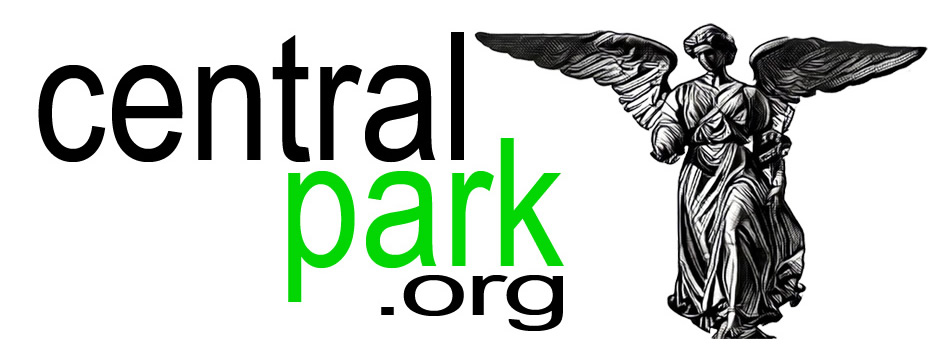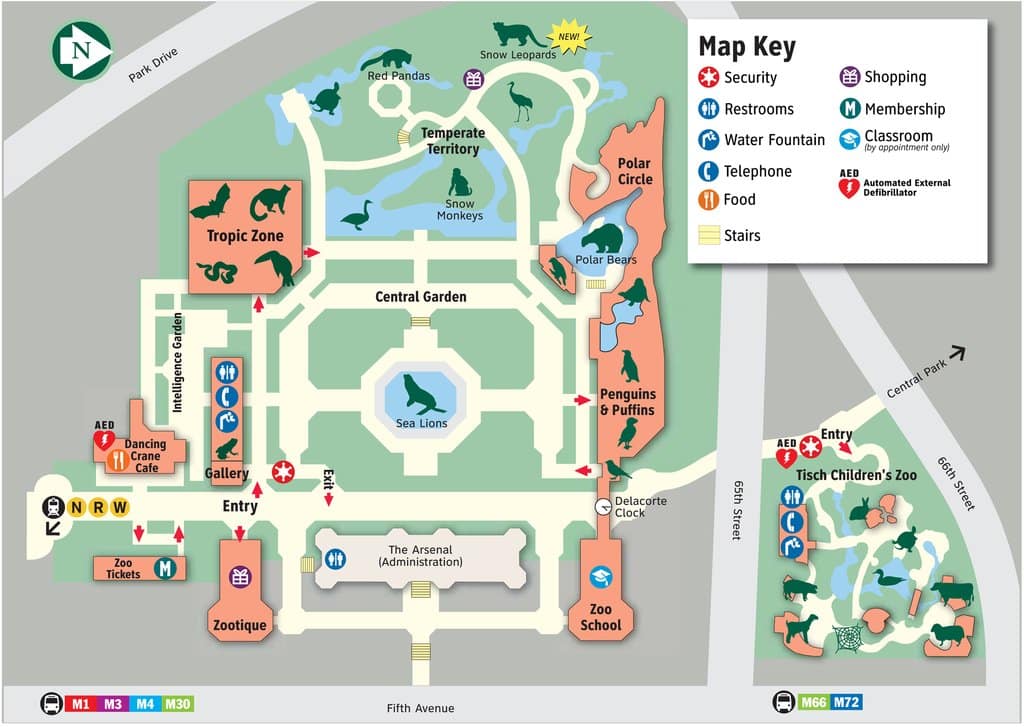Central Park Zoo
 The first incarnation of the zoo in Central Park came about almost by accident. It began with New Yorkers dropping off unwanted animals at the arsenal. These included everything from 72 white swan to a black bear cub (everything, that is, except the apocryphal alligators that found their way to the sewer system.) In 1864 the legislature approved the construction of a several buildings to house the growing collection and the Central Park Menagerie was born. In 1934 Parks Commissioner Robert Moses used Works Progress Administration (WPA) funds to construct what was, for its time, a state-of-the-art facility. Designed with a storybook theme the new Central Park Zoo provided a greatly improved home for the animals and a wonderful place to visit them.
The first incarnation of the zoo in Central Park came about almost by accident. It began with New Yorkers dropping off unwanted animals at the arsenal. These included everything from 72 white swan to a black bear cub (everything, that is, except the apocryphal alligators that found their way to the sewer system.) In 1864 the legislature approved the construction of a several buildings to house the growing collection and the Central Park Menagerie was born. In 1934 Parks Commissioner Robert Moses used Works Progress Administration (WPA) funds to construct what was, for its time, a state-of-the-art facility. Designed with a storybook theme the new Central Park Zoo provided a greatly improved home for the animals and a wonderful place to visit them.
As time passed, however, it became apparent that the zoo was becoming woefully inadequate for residents. In the spring of 1980 the Wildlife Conservation Society entered into an agreement with the City of New York to renovate and operate the zoo on behalf of the Parks Department. Construction was finished by 1985 and the new Central Park Zoo was a reality, and the park once again was home to a facility which is considered one of the finest of its kind. The zoo in Central Park now attracts nearly a million visitors a year from all over the world.
The new zoo is divided in several different sections that provide the animals with homes as close to their natural habitat as possible. These include tropic, temperate and polar zones that house everything from tiny leafcutter ants to hugely popular polar bears. The zoo is also actively involved the preservation of endangered species, providing a home for rare tamarin monkeys, Wyoming toads, thick-billed parrots, and red pandas. Rumors of a secret exhibit featuring English-speaking cab drivers have never been confirmed.
The zoo has always held a special spot in the hearts of New Yorkers who have come to adopt the animals as prized members of the metropolitan community. The early menagerie was home to “Murphy” the hippo and “Mike Crowley,” the first chimpanzee ever shown in the United States. In fact, when Mr. Crowley took ill, get well cards poured in from fans all over the city.
Location
East Side between 63rd and 66th Streets
Hours
April – Oct. Monday – Friday 10 am – 5 pm, Weekends 10 am – 5:30 pm
Nov. – March Daily 10 a.m. – 4:30 p.m.
Adult – 13 & over – $19.95
Child – 3-12 – $14.95
Senior – 65 & over – $16.95
Child – 2 & under – $0.00
* General Information: 212-439-6500


